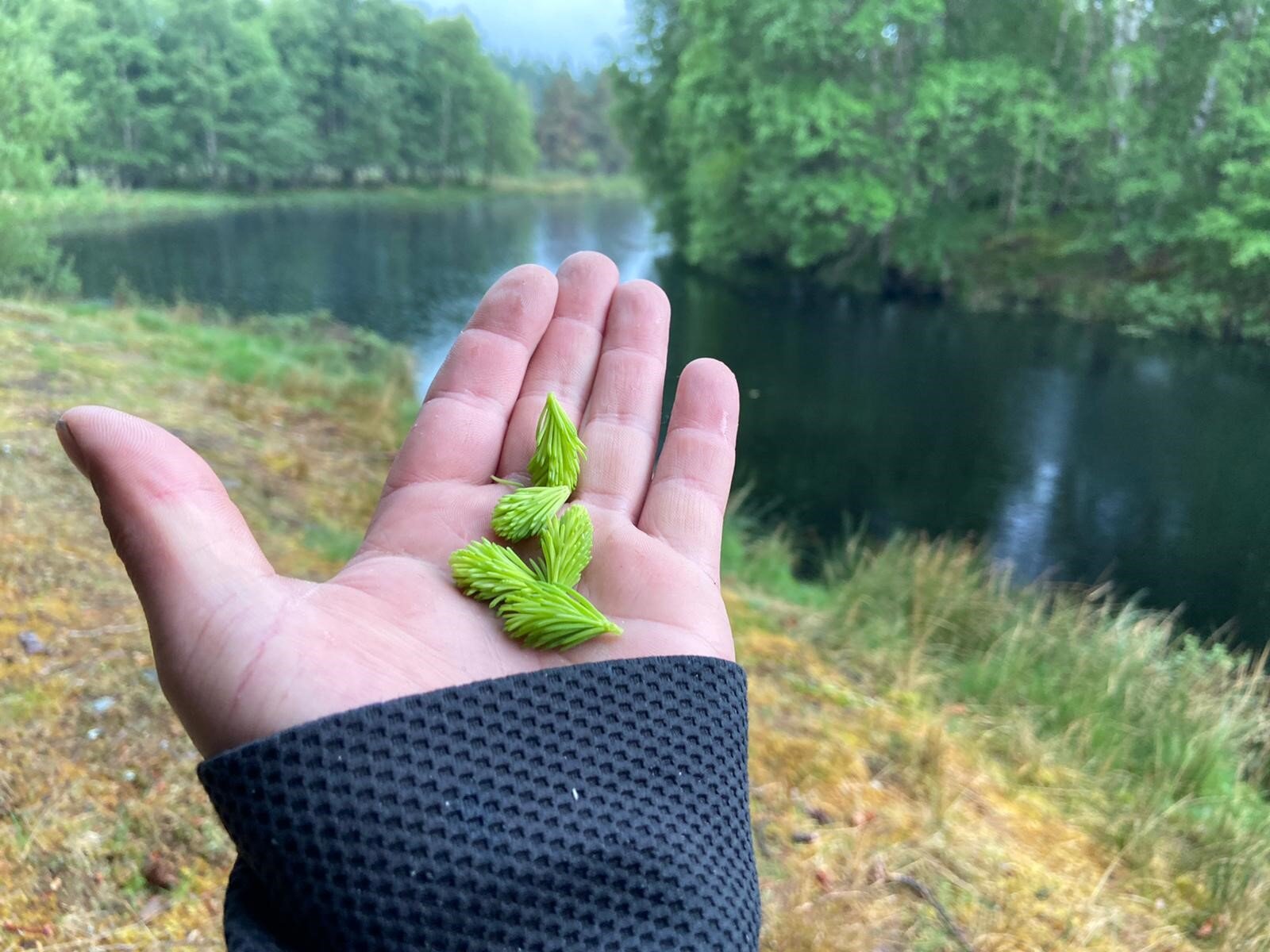Spring Foraging Guide
With today’s emphasis on eating locally sourced, seasonal, sustainable food, foraging has seen a huge surge in popularity. As the days get longer and the last chunks of snow melt from the top of the Cairngorms, spring is finally here – and with it, an abundance of edible plants and flowers.
Have you ever wondered what the rules of foraging are? What to look out for? And where to go? We’ve created this guide to foraging in spring, to get you started.
Foraging guidelines in Scotland
- Do some research. It’s always best to do your research before you start foraging and to make sure you know what you’re looking for. Some types of plant and fungi are poisonous (and some are just unpleasant to eat) so make sure you have a clear idea of what you’re after and preferably a guide for reference.
- Take only what you need. There’s plenty for everyone out there, including the local wildlife, but be mindful of others and only take what you think you can eat.
- Don’t forage in a National Nature Reserve (NNR) or a Site of Special Scientific Interest (SSSI). There are certain areas of Scotland where the wildlife and fauna is carefully monitored, so be aware of your surroundings and be careful not to forage in these areas.
What to look out for in spring
- Wild Garlic (allium ursinum). This is a native bulb that grows from late winter until the end of spring, although it’s at its best in April. Look out for the long pointed leaves of wild garlic in shady, damp conditions, like riverbanks, hedgerows and on the woodland floor. In the late season, around May, the leaves will start to produce white flowers, which are also edible and will add some punch to sandwiches and salads.
If you’re not sure whether you’ve found some or not, rub the leaves in your hands and there should be a fresh, garlicky smell. It looks very similar to lily of the valley, which isn’t edible, so make sure you do the smell test! It’s lighter in flavour than a traditional garlic bulb and its leaves can be eaten raw, blended into pesto, or cooked to add to pasta, salads and soups.
- Nettles (urtica dioica). You may consider nettles to be an annoying weed that stings you if you touch the outer leaves, but have you every tried cooking with it? It’s a surprisingly versatile ingredient and is even said to be a super food, rich in vitamins and minerals. Nettles need to be cooked to remove their sting and, like spinach, they’ll reduce to about a quarter of their fresh amount. They have an earthy, wholesome flavour similar to other greens and have been used for medicinal purposes by many cultures around the world.
If you’re going to pick some nettles, make sure you wear gloves. It’s also a good idea to avoid areas that could be polluted or dirty, like roadsides or pesticide-ridden places. Boiling nettle leaves into a tea is a popular way to extract the subtle flavour, but they’re also great in sauces and soups. New growth usually appears in early February and the plant is abundant pretty much everywhere.
- Dandelion (taraxacum officinale). The name literally translates as lion’s tooth (dent de lion) and has long been associated with herbal medicine and folklore. Recognisable throughout the UK, they grow in abundance so are a great place to start for inexperienced foragers. While dandelion is often thought of as a weed, it’s actually a nutritious herb with a long list of uses.
The whole plant is edible and can be harvested at any time of year, but it’s most tender during spring. Look for big leaves with fewer lobes as they’re the tastiest and least bitter. If you like the peppery taste of rocket or radicchio in salads, try adding freshly picked and washed dandelion greens instead. The leaves are also great in pesto (although it’s a good idea to add some lemon juice to help neutralise some of the bitterness). The flowers have a delicate, sweet flavour and can be used to make, tea, jam, and even mead.
Like nettles, they are incredibly abundant, but be careful to pick them from an area that isn’t polluted or treated with pesticides.
- Oxeye daisy (leucanthemum vulgare). Also known as dog daisy, this is easy to spot and has edible flowers and flower buds. It thrives in direct sunlight and can be found on verges, hedgerow and in meadows from late spring through to autumn. It’s best to pick oxeye daisies when they are young so the flavour is most mild.
The leaves can be eaten raw or cooked. Young spring shoots can be finely chopped and added to salads and to soups. Some people find this plant to be a bit strong in flavour and prefer it cooked. The root can be eaten raw and the flowers can be tossed into a salad or pickled like capers.
Foraging on the menu
Local chef Chris McCall has a food truck on the beautiful Alvie Estate and sources a lot of his produce from the forests around him. Check out Alvie Forrest Food on Facebook for their daily specials and opening times.
Photo credit: Alvie Forest Food
*banner photo by Hannah Bailey (www.whatmakesagoodphoto.com)






